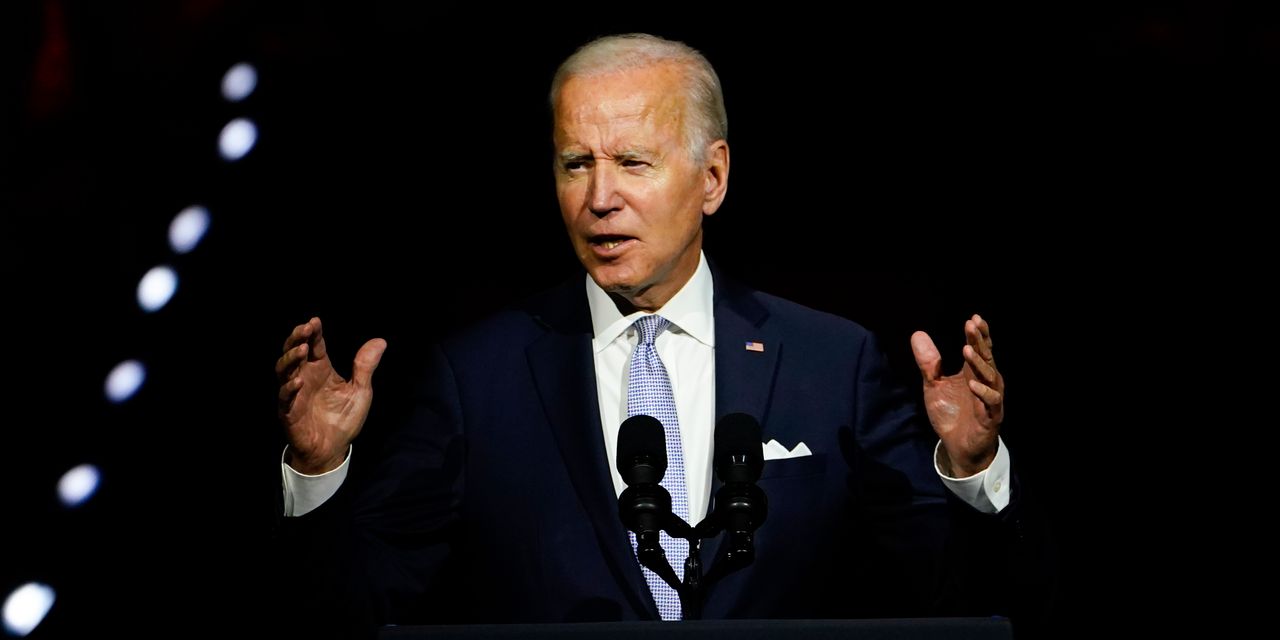Present Joe Biden’s student-loan forgiveness has attracted wide criticism, but few express the menace it poses to the Federal Reserve and congressional powers.
Federal student loans create more equal access to quality higher education for working- and middle-class students, and the average college graduate earns more, lives longer and expresses greater satisfaction with life.
However, the indiscriminate nature of the program permits universities to hawk degrees that offer few prospects of landing a good job and often victimize many less qualified students.
Saddled with debt
About half of college freshmen either leave without a degree or earn less than the average high school graduate. Yet, many are saddled with heavy debt they can’t or struggle to repay.
Federal undergraduate student loans are capped at $57,500 for financially independent students—$31,000 for those with parental support—but borrowing for graduate school has virtually no limit.
It doesn’t matter whether you are studying romance languages or electrical engineering.
The typical NYU masters in film studies owes $113,180 and earns $30,581 three years after graduation. Columbia’s program numbers are even worse, and the problem is endemic throughout softer professional programs and non-elite law schools.
Universities use the profits to subsidize undergraduate programs, bloated administrations, and light teaching loads.
Misallocated resources
All of this discourages college students from choosing majors wisely and high schools from steering more young people into apprenticeships and training programs. The latter often yield college-competitive pay, potentially creating many of the other above-mentioned life benefits.
University priorities for financial aid are sometimes questionable.
NYU offers free tuition for medical school. Considering that medical schools are among the most expensive enterprises universities run and virtually guarantee graduates high paying jobs, the free ride raises serious equity issues when the institution is saddling students in the arts, who will often end up in low-paying work, with massive debt.
Since 1980, the cost of a four-year degree at a state university has risen nearly two times the pace of inflation. Yet for most programs, universities use few extraordinary resources that justify this—buildings, Ph.D.s who usually receive free graduate education, a library, and computers.
All this shrinks the productive labor force, misallocates capital and undermines growth—and encourages universities to jack up prices.
Adding to inflation
The president will forgive $10,000 for individuals earning less than $125,000—$20,000 for couples earning less than $250,000. And doubles those figures for folks who received Pell Grants.
The immediate budgetary impact will be about $470 billion and gives a massive jolt of new spending powers to former students. That should add 0.3% to 0.5% to inflation and wholly overwhelm the net revenue effects of the Inflation Reduction Act.
More menacing, the required repayment rate for income-driven repayment programs will be lowered to 5%—down from 10 %to 15%—and apply to incomes above 225% percent of the federal poverty line—up from 125%—in current programs.
After 10 years, the balance will be forgiven—not the current 20 years.
Consider what that means for the typical NYU or Columbia film-studies graduate earning $30,000.
In 2022, 225% of the poverty line is $30,578.
NYU can charge $75,000, $150,000 or more, and impose debt of $100,000, $250,000 or even $1 million on students. After graduation, they can sign up for debt repayments of nearly zero and have it all forgiven in 10 years.
Encourage tuition increases
All this will encourage universities to continue as they have and to exercise even less discipline regarding costs and tuition.
The new borrowing and debt forgiveness likely will get turned into bonds as the federal government borrows to finance the loans. Either the Federal Reserve will print money to purchase equivalent securities or the supply of U.S. Treasurys in circulation will jump.
The new debt will either add to inflation or crowd out other investment.
The Federal Reserve’s exercise of monetary policy to promote employment and manage inflation will be further constrained by a policy that enables the creation of billions in additional federal debt.
The legal justification for an executive order as opposed to legislation for all this irresponsibility appears to be a 2003 statute that permits the secretary of education to waive or modify student loans in a national emergency.
Two years after the COVID shutdowns, it is hard to justify that we are in such an emergency. Businesses are ordering workers back to offices and pandemic protocols are being relaxed, for example, for public transportation in New York.
Arguably, the statute is applicable only on a case-by case-basis—it is not a writ for blanket forgiveness.
All this smells of presidential arrogation of congressional power to spend.
Sadly, identifying individuals with standing to challenge this madness in court appears difficult.
Biden likes to point a finger at the irresponsible and threatening behavior of his predecessor. He might do well to look in the mirror.
Peter Morici is an economist and emeritus business professor at the University of Maryland, and a national columnist.



